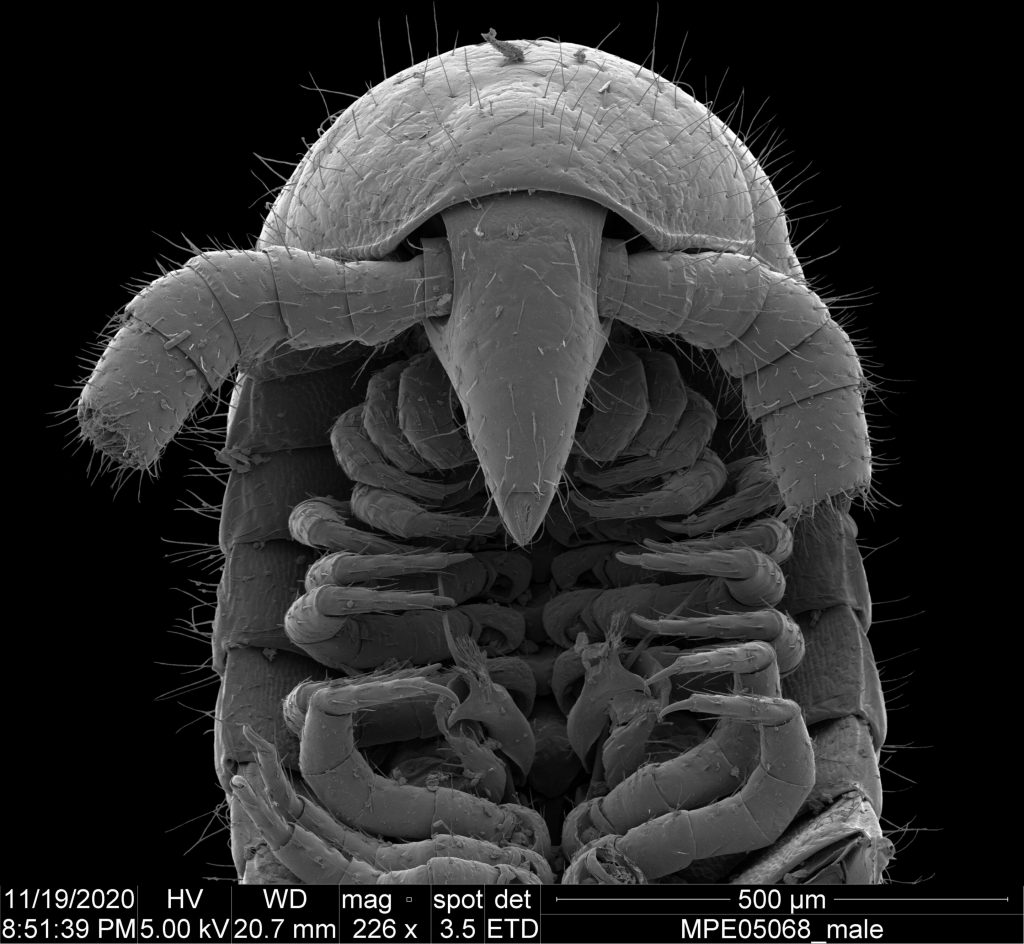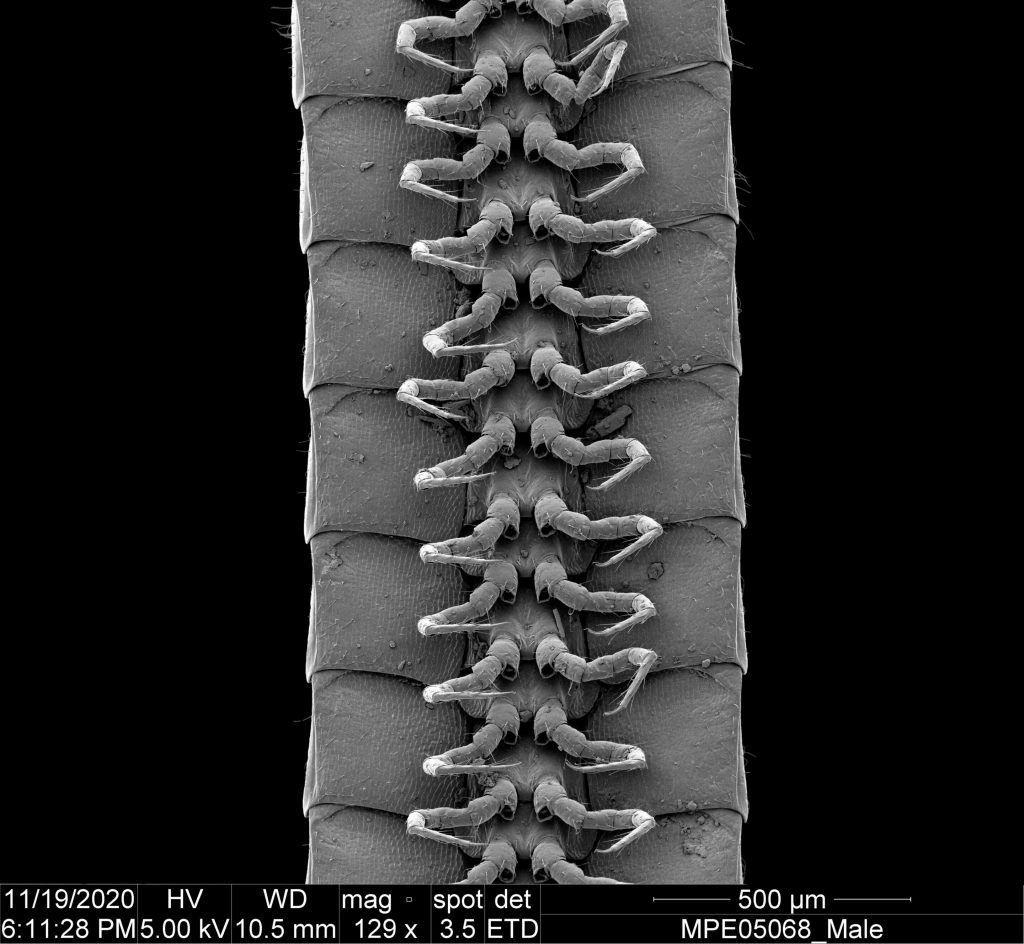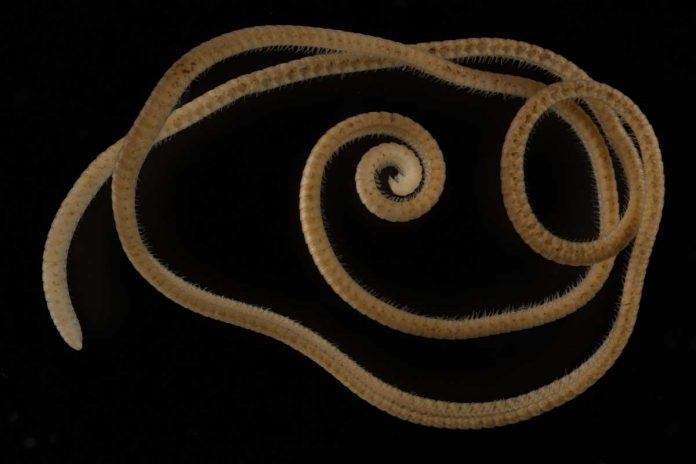Scientists Paul Marek and colleagues have discovered the first millipede with more than 1,000 legs from 60 meters underground. Before this no millipede has been found with more than 750 legs. The research paper of this millipede has been published in the journal Scientific Reports.
The underground has been dug for mineral exploration in the mining area in the Eastern Goldfields Province of Australia. The millipede has total 1,306 legs. This millipede belongs to a new species named Eumillipes persephone. Scientists have named it Eumillipes as the Greek word eu means true and Latin words mille means thousand and pes means foot. Persephone is the Greek goddess of the underworld.
The scientists have experimented with four millipedes and they have measured their long, thread-like bodies that have 330 segments. Its body is up to 0.95mm wide and nearly 95.7mm long. These millipedes have short legs and they have no eyes.
Scientists have found out that these millipedes are not connected with the previous record holder Californian millipede species named Illacme plenipes, that once had the greatest number of legs. But they have one similarity that both these species can move through a narrow opening in the soil because of their body structure.

The discovery of the new species has highlighted the biodiversity of the Eastern Goldfields Province of Australia. The researchers also think that the continuous mining in the Goldfields region will affect the E. Persephone. This is why scientists have advised that the authorities must take steps to safeguard the new found species.


